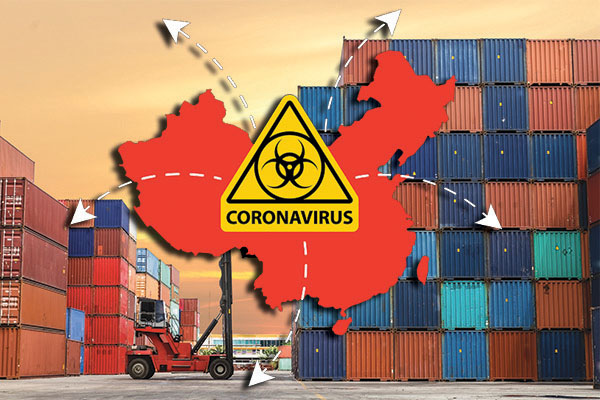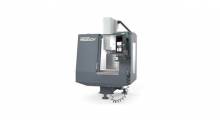A new report issued by Milwaukee-based supply chain consultancy Armstrong & Associates Inc. provides a comprehensive overview of the current state of the third-party logistics (3PL) market.
Entitled “VOLATILE—Latest Third-Party Logistics Market Results and Predictions for 2020 Including Estimates for 190 Countries,” the report takes a deep dive into myriad subsets of the 3PL industry, including Value-Added Warehouse Distribution (VAWD), Dedicated Contract Carriage (DCC), Domestic Transportation Management (DTM); and International Transportation Management (ITM).
A key theme of the report pertained to e-commerce, which Armstrong said is the most rapidly-growing 3PL segment, due to retailers’ reliance on global e-commerce giant Amazon and 3PLs to navigate omnichannel and e-commerce operations. This is a trend that is not going to abate anytime soon, with e-commerce revenues hitting $43.4 billion in 2019, with the expectation of 28% CAGR (compound annual growth rate) through 2020, driven by continued e-commerce activity and shippers outsourcing logistics operations, as opposed to developing their own internal fulfillment operations.
Looking at its key 3PL segments, Armstrong reported the following, for the first half of 2020:
- VAWD gross revenue decline was off 7.1%, for the first half of 2020, with gains in e-commerce and B2B declines. Net revenue was off 5.8%. Armstrong said the third and fourth quarters will see incremental gains driven by gradual economic recovery and shippers restoring inventory;
- DCC gross revenue fell 3%, with net revenue seeing a slight decline. Armstrong noted that the COVID-19 economic volatility in domestic transportation, coupled with demand gains, should have a positive impact for growth over the remainder of 2020, with shippers looking for a “safe haven” for capacity;
- DTM gross revenue was off 8%, with net revenues falling 16%, due to declining shipments across all modes, specifically for shippers in the auto, industrial, building/construction, and elements/raw materials sectors; and
- ITM gross revenue was up 3.8%, with the firm noting that second quarter ocean and air volumes declined, with tight ocean capacity, which led to steep rate hikes compared to 2019 and boosted gross revenues. The air cargo sector lost its commercial airline belly space, due to COVID-19, while ocean container capacity was hampered because of blank sailings from Asia
For 2019, Armstrong stated in the report that U.S. 3PL market net revenues, which are gross revenues minus purchased transportation, headed up 5.9%, to $91.5 billion, and overall gross revenues dropped 0.3%, with total U.S. 3PL net revenues at $212.8 billion. And, for 2020, it expects U.S. 3PL gross revenues to be down less than 1%, with a slight net revenue increase.
On the global 3PL side, the report said 2019 global 3PL logistics revenues rise 2.1%, to $951 billion, compared to 2018, with a 2020 2.9% annual decrease expected, due to COVID-19 and trade war issues.
Armstrong & Associates President Evan Armstrong offered up some insight on the report’s findings below.
LM: With business conditions so unusual, due to COVID, is the 2020 estimate for just under 1% growth better than the number indicates?
Armstrong: It could have been much worse. We are expecting the third and fourth quarters to help soften the blow of COVID-19 in all of the 3PL segments except for International Transportation Management (ITM), which had growth in the first half of 2020 versus the same period in 2019. The International Transportation Management (ITM) 3PL segment, consisting of air and ocean freight forwarding and complementary value‐added services saw 3.8% gross revenue growth in the first half of 2020. In Q2 2020 ocean and air volumes were off, while air and ocean capacity both remained tight. This resulted in significant rate increases over last year, which drove up gross revenues. With the shutdown, commercial airline belly space, which accounts for approximately 40% of total capacity, went away and ocean carrier capacity tightened due to blank (cancelled) sailings out of Asia.
For the first half of 2020, we saw an 8% drop in Domestic Transportation Management (DTM) 3PL segment gross revenues versus the same period in 2019 and a 16% decline in net revenues as shipment volumes dropped off across all modes. Heavily impacted were 3PLs with customers in Automotive, Industrial, Building/Construction, and Elements/Raw Materials vertical industries. Reefer and Dry Van Truckload fared better than construction dependent Flatbed.
In May, as economic activity picked up with business reopenings, we have seen a significant “bullwhip” effect with significant order volume to replenish inventories and fill backorders driving volatile demand for domestic transportation. While air and ocean carrier capacity remains tight, international shipments have cooled somewhat after the Q2 surges in demand due to orders for personal protective gear and high-tech equipment to support remote workers.
LM: For DCC, does the still tight TL capacity situation translate into steady growth for the next few months?
Armstrong: Within the asset‐heavy Dedicated Contract Carriage (DCC) 3PL market segment, gross revenue was off 3% for the first half of 2020 versus the first half of 2019 and net revenue saw a slight decline. DCC segment shipment volumes declined, but the overall impact was lessened due to the longer-term nature of its customer agreements. We anticipate the COVID-19 economic volatility in domestic transportation and increases in domestic transportation demand to positivity impact DCC growth for the remainder of the year as shippers look for a safe haven for capacity and as DCC providers continue to benefit from contracts negotiated prior to the pandemic.
LM: What are the upsides for the VAWD market, given how parts of its customer base are doing well and others are not?
Armstrong: With COVID-19 stay-at-home orders and business shutdowns, Value-Added Warehousing and Distribution (VAWD) had significant growth in business-to-consumer (B2C) e-commerce fulfillment activity during the first half of 2020, while business-to-business (B2B) activity waned. Like DCC, VAWD 3PLs also benefit from being in longer-term business contracts (with an average term of three years). Most VAWD 3PLs entered 2020 with full warehouses, so significant storage fees were still being paid. As 2020 progressed and the shutdowns were initiated, in-and-out activity and non-e-commerce related value-added service activity declined and overall inventory levels trended down leading to less storage revenue. The overall impact for the first half of 2020 was a VAWD gross revenue decline of 7.1% and a net revenue decrease of 5.8%. Q3 and Q4 should see incremental increases as the economy continues to comeback in spits and spurts, and as VAWD customers rush to restore inventory levels.
About the Author
Follow Robotics 24/7 on Linkedin
Article topics
Email Sign Up
















